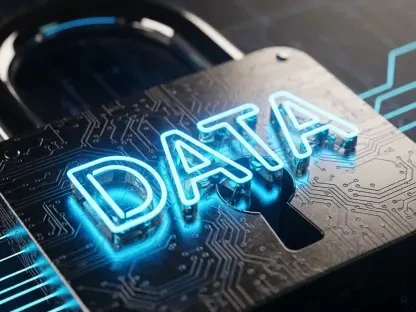In the rapidly evolving landscape of digital assets, technological innovations and legal frameworks work in tandem to shape the market. Today, we have Desiree Sainthrope, a recognized authority in global compliance and technology law, to delve into the complexities of digital asset regulation, its challenges, and the potential future of the sector. With her vast experience, Desiree brings a wealth of knowledge on topics ranging from regulatory changes to the impact of cutting-edge technologies like AI and blockchain.
Can you discuss the impact of the EU Markets in Crypto-Assets Regulation that took full effect in December 2024 on the digital assets market?
The EU Markets in Crypto-Assets Regulation (MiCA) represents a pivotal shift in how digital assets are treated within the European Union. Its implementation provides a comprehensive framework that offers legal certainty and aims to protect consumers while fostering innovation across the EU. By establishing clear guidelines, MiCA helps mitigate risks associated with crypto-assets, which is instrumental in increasing investor confidence and encouraging wider participation. This regulation also harmonizes requirements across member states, which can reduce operational complexity for businesses operating in multiple jurisdictions.
What are the proposed UK regulations regarding crypto-assets like Bitcoin and stablecoins, and how might they affect the market?
The UK’s proposed regulations mark a significant step toward bringing crypto-assets under a formal regulatory umbrella. By focusing on Bitcoin and stablecoins, the UK is attempting to balance innovation with adequate market oversight. These regulations aim to integrate crypto-assets into the broader financial system, potentially leading to increased adoption and usage. They could also set a precedent for how other countries approach crypto regulation, especially given the UK’s influence as a financial hub.
Can you explain the significance of the asset tokenization reaching an estimated $16 trillion by 2030? What factors are contributing to this growth?
Asset tokenization is transforming how we perceive asset ownership and trading. The estimated $16 trillion growth is driven by several factors, including the democratization of asset access, improved liquidity, and the increasing acceptance of blockchain technology across various sectors. Tokenization allows for fractional ownership, making it easier for individuals to invest in high-value assets, breaking traditional barriers historically associated with large investments. This growth is indicative of a broader shift towards more inclusive financial systems.
How is the US administration supporting the digital assets market through initiatives like the Strategic Bitcoin Reserve and Digital Asset Stockpile?
The US administration’s initiatives, such as the Strategic Bitcoin Reserve and Digital Asset Stockpile, signal a clear endorsement and recognition of digital assets as a strategic interest. These measures suggest an embracing of crypto-assets within national economic frameworks, potentially leading to increased institutional participation and stabilization of the digital assets market. By laying such groundwork, the US could accelerate innovation domestically and keep pace with international developments in digital finance.
What role does blockchain technology play in comparison to AI and quantum computing in today’s digital finance landscape?
Blockchain technology remains a foundational element of digital finance, primarily providing transparency and improving efficiencies through decentralized ledgers. When compared to AI and quantum computing, blockchain’s role is distinct yet complementary. AI can leverage blockchain for secure data sharing, while quantum computing poses both challenges and opportunities for blockchain’s cryptographic underpinnings. Together, these technologies can revolutionize digital finance by enhancing security, optimizing processes, and enabling new financial products and services.
How are financial institutions adapting to maintain their role as intermediaries and gatekeepers in the evolving digital age?
Financial institutions are increasingly investing in digital transformation to stay relevant. By adopting new technologies, they ensure secure and efficient transactions and meet regulatory requirements. Institutions are also exploring partnerships with fintech companies to integrate innovative solutions. This adaptability is vital for maintaining their roles as intermediaries, ensuring financial stability, and protecting investors in an ever-evolving digital landscape.
What are the objectives of initiatives like the UK Digital Securities Sandbox and the EU DLT Pilot Regime in accelerating the digital assets market?
The UK Digital Securities Sandbox and the EU DLT Pilot Regime are designed to foster innovation by providing a controlled environment for testing digital asset technologies under a regulator’s oversight. The main objective is to identify any potential regulatory hurdles and inspire confidence in digital technologies for both innovators and investors. By supporting experimentation and collaboration, these initiatives aim to accelerate market growth and fully integrate digital assets with existing financial frameworks.
How has the collapse of crypto firms like FTX affected newcomers in the digital assets space, and how are they reinventing their business models?
The collapse of firms like FTX has had a sobering effect on the industry, highlighting the importance of robust risk management and regulatory compliance. Newcomers are now more focused on sustainable business models, compliance with regulations, and transparent operations. This shift may lead to enhanced trust among investors and consumers, paving the way for a more resilient digital asset market. By learning from past mistakes, these companies are poised to drive innovation while maintaining a commitment to security and ethical practices.
Can you elaborate on the dual impact of quantum technology on traditional cryptography methods and security in the financial sector?
Quantum technology is a double-edged sword for the financial sector. On one hand, it threatens traditional cryptographic methods, which are foundational to securing transactions and data. On the other hand, quantum computing offers enhanced security solutions that could revolutionize the industry. Financial institutions are actively collaborating with tech companies to develop quantum-resistant cryptography, ensuring that security keeps pace with technological advancements. This proactive approach is crucial in safeguarding the integrity and trust of digital financial systems.
What are the potential business and legal challenges faced by Central Bank Digital Currencies in competing with private cryptocurrencies?
Central Bank Digital Currencies (CBDCs) face several hurdles as they seek to compete with established private cryptocurrencies like Bitcoin. Business challenges include interoperability with existing financial systems and achieving widespread adoption. Legally, CBDCs must navigate complex compliance landscapes, including privacy and data protection laws. There’s also a need to balance regulation with innovation to prevent stifling the market’s growth. Despite these challenges, CBDCs hold promise for enhancing monetary policy effectiveness and financial inclusion.
How might CBDCs be used to support tokenized markets and provide social benefits? What privacy and data protection concerns do they face?
CBDCs can bolster tokenized markets by providing a stable and government-backed digital currency option. They could facilitate seamless transactions and improve financial inclusion by enabling access to digital finance tools. However, CBDCs also raise privacy and data protection issues. Governments must ensure that these currencies do not become tools for surveillance, respecting individuals’ right to financial privacy. Effective measures need to be implemented to protect users while enjoying the benefits of a digital economy.
What issues need to be addressed with the increasing use of private ‘monies’ such as NFTs in Web3 and Metaverses?
As private ‘monies’ like NFTs proliferate in Web3 and Metaverses, various concerns emerge. Key issues include regulatory frameworks that govern ownership rights, taxation, and intellectual property. Ensuring the security and legality of transactions within these digital ecosystems is imperative. Additionally, there is a need for clear proprietary taxonomies and standardization practices, which can help prevent fraudulent activities and enhance transparency for users in these virtual spaces.
How will financial institutions continue their functions as intermediaries and gatekeepers for investment protection and market integrity in the digital assets market?
To maintain their essential roles, financial institutions are embracing technological innovation and rigorous compliance practices. They focus on implementing sophisticated cybersecurity measures, adopting blockchain for transaction tracing, and using AI for risk assessment. By acting as trusted entities that offer reliable services, financial institutions help uphold market integrity and protect investments, ensuring that the digital asset ecosystem thrives in a secure and ethical manner.
Can you discuss the process and challenges of converting digital assets to fiat currencies?
Converting digital assets to fiat involves navigating a complex landscape of regulatory requirements and market fluctuations. The process requires coordination between digital asset exchangers and traditional financial institutions. Challenges include ensuring compliance with anti-money laundering regulations and managing the inherent volatility of cryptocurrencies. Additionally, liquidity can be a concern, potentially resulting in unfavorable conversion rates. These factors necessitate robust platforms and frameworks to facilitate seamless conversion while mitigating risks.
How do decentralized autonomous organizations issue ‘power tokens’ or ‘governance tokens’ and what role do centralized digital exchanges play in this?
Decentralized autonomous organizations (DAOs) use smart contracts to issue governance or ‘power tokens,’ which are integral to their decentralized governance structures. These tokens often represent voting power or governance rights within the DAO. While issued on decentralized platforms, centralized digital exchanges still play an essential role in providing liquidity, market visibility, and investor protection through regulatory compliance. This hybrid approach helps balance the advantages of decentralization with the accountability benefits of traditional finance.
What are some legal strategies for making digital asset claims against wrongdoers in this digital age?
Legal strategies for pursuing digital asset claims begin with tracing the digital footprint of the assets. Engaging third-party analysts and leveraging blockchain technology for transparency can aid in identifying wrongdoers. Legal practitioners must be adept at presenting blockchain-based evidence in court effectively. Crafting sound legal arguments and collaborating with digital forensic experts are critical to overcoming the complexities associated with these cases, ensuring justice in a predominantly digital ecosystem.
Why is it important for lawyers to present evidence and arguments related to blockchain and smart contracts in courts? How may this be achieved?
Presenting evidence related to blockchain and smart contracts is crucial to adapting to the modern legal landscape where digital interactions are prevalent. Lawyers must be conversant with technical details and interpretate decentralized records accurately. This can be achieved through continued legal education, leveraging expert witnesses, and employing advanced legal-tech tools. Clear articulation and comprehensive understanding of digital mechanisms ensure that blockchain-based evidence holds up in court, laying the groundwork for informed judicial outcomes.
How can lawtech contribute to the digital assets market, particularly in compliance and token issuing?
Lawtech can significantly streamline the processes of compliance and token issuance by offering automated solutions that simplify regulatory adherence. It aids in the creation of smart contracts, facilitates legal property transfers, and ensures transparency. Lawtech tools can help organizations manage token lifecycles, comply with legal frameworks, and assist in dispute resolution. These efficiencies not only reduce operational costs but also mitigate legal risks, offering robust support to the burgeoning digital assets market.
In what ways might the advancement of technology, policy, and law shape the digital assets market in the next five to ten years?
The interplay of technology, policy, and law will be a decisive force in shaping the digital assets market. Technological advancements like blockchain and AI will drive innovation and new use cases, while policy will define the boundaries of permissible conduct and safeguard societal interests. Legal frameworks will create the structure needed for regulation, balancing risks and promoting innovation. As these elements evolve, they will collectively ensure a sustainable, secure, and inclusive digital financial ecosystem, potentially transforming global economic landscapes.
Do you have any advice for our readers?
Staying informed and adaptable is key in the digital asset space. Given the rapid technological and regulatory changes, continuous learning and proactive engagement with new developments will be beneficial. Understanding the underlying technologies, legal frameworks, and market dynamics can empower individuals and businesses to navigate the complexities confidently and capitalize on the opportunities presented by the digital economy.









